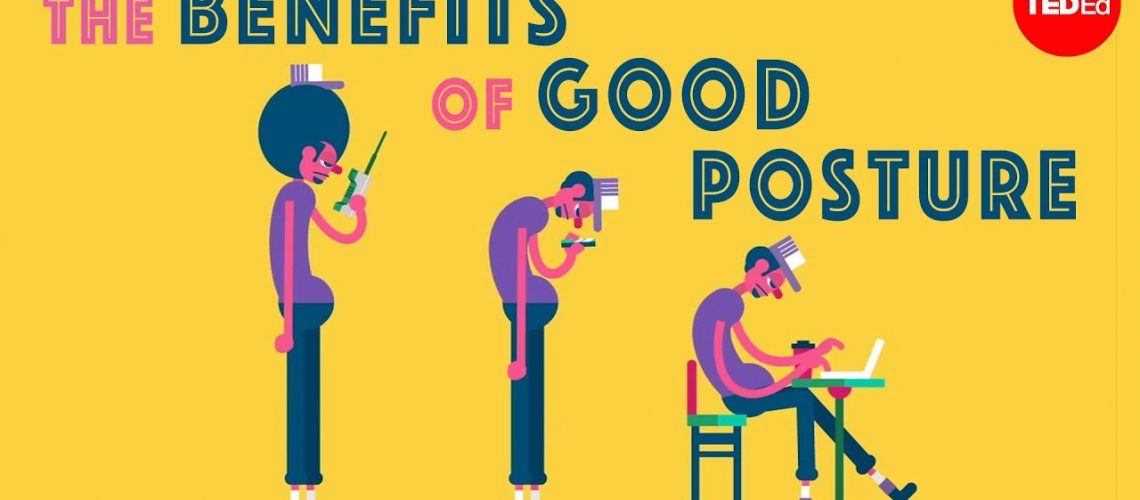Your posture—the way you hold your body when you're sitting or standing—is the foundation for every movement your body makes.
Your posture, the way you hold your body when you’re sitting or standing, is the foundation for every movement your body makes and can determine how well your body adapts to the stresses on it. These stresses can be things like carrying weight or sitting in awkward positions. And the big one we all experience all day, every day: gravity.
The Benefits of Proper Posture
Murat Dalkilinc
Key Takeaways
If your posture isn’t optimal, your muscles have to work harder to keep you upright and balanced. Some muscles become tight and inflexible. Others will be inhibited. Over time these dysfunctional adaptations impair your body’s ability to deal with the forces on it. Poor posture inflicts extra wear and tear on your joints and ligaments, increases the likelihood of accidents, and makes some organs like lungs, less efficient.
Researchers have linked poor posture to scoliosis, tension headaches, and back pain, though it isn’t the exclusive cause of any of them. Posture can even influence your emotional state and your sensitivity to pain. So there are a lot of good reasons to aim for good posture. Sitting in an awkward position for a long time can promote poor posture, and so can using computers or mobile devices, which encourage you to look downward.
What does good posture look like? When you look at the spine from the front or the back, all 33 vertebrae should appear stacked in a straight line. From the side, the spine should have 3 curves, one at your neck, one at your shoulders and one at the small of your back.
You aren’t born with this ‘S’ shaped spine. Babies spines just have one curve like a ‘C’. The other curves develop by 12-18 months as the muscles strengthen. These curves help us stay upright and absorb some of the stress for activities like walking and jumping.
If they are aligned properly, when you’re standing up you should be able to draw a straight line from a point just in front of your shoulders, to behind your hip, to the front of your knee, to a few inches in front of your ankle. This keeps your center of gravity directly over your base of support, which allows you to move efficiently with the least amount of fatigue and muscle strain.
If you’re sitting, your neck should be vertical, not tilted forward. Your shoulders should be relaxed, with your arms close to your trunk. Your knees should be at a right angle with your feet flat on the floor.
It’s not enough to just have good posture. Keeping your muscles and joints moving is extremely important. In fact, being stationary for long periods with good posture can be worse than with regular movement with bad posture. If you sit a lot, get up and move around on occasion, and be sure to exercise. Using your muscles will keep them strong enough to support you effectively on top of all the other benefits to y our joints, bones, brain, and heart.
The Benefits of Proper Posture
Health Complications Everyone gets older and may experience joint pain, and non-contact joint pain is likely an outcome of poor posture. Proper postural dynamics will utilize more muscles to help support the body which can help alleviate pain and help the body become more structurally sound.
- Aligning your posture in an optimal position will help activate muscles that are no longer being used and strengthen the muscles that have become weak and inhibited.
Breathing Bad posture affects breathing negatively by altering the length-tension relationships within breathing muscles. Breathing is pretty important for living. Proper posture will stimulate and improve breathing.
Increases concentration and thinking ability the brain requires 20% of oxygen to function properly. Since better posture increases breathing ability, the brain will get a better supply of oxygen, helping the body function more efficiently.
Digestion Proper posture allows the internal organs in the abdomen to maintain their position without excessive compression, while poor posture can interfere with the normal function and be the root cause of digestive problems. By standing up straight, the digestive tract has optimal alignment, allowing the internal organs function properly and efficiently.
Circulation If muscles and bones are out of optimal alignment, they may impinge upon essential nerves and arteries that assist movement and blood flow. Good posture opens up the circulatory system helping blood flow and nutrients efficiently get to the muscular systems.
Aesthetics, Athletics, Flexibility the body will have better symmetry and has been shown to be one of the foundations of attractiveness. Since poor posture deactivates muscles (like the glutes) these deficiencies will contribute to sub-optimal performance and poor integrated neuromuscular function.
- Maintaining proper posture will help with tightened muscles. Once these tight muscles are released, everyday movements will become smoother and help with flexibility, which is important because it will enhance movement.
Libido, Stress Extreme amounts of stress can significantly decrease a person’s sex drive. Since both the stress response and the sex hormones stem from the endocrine system, the better the body can regulate stress, the better your sexual performance will be.
Better mood, Self-image, Energy Proper posture can change your hormones—increased levels of testosterone and decreased levels of cortisol, or the stress hormone, in the brain. This has a positive impact on energy levels, mood, confidence, self-image and the way you ultimately feel.
- A Harvard study done by body language expert Amy Cuddy explains how posture has a direct relationship with how you look, feel and believe it or not, bad posture makes you less confident and more anxious. It has an effect on hormone and stress levels by adjusting cortisol and testosterone in the body.

